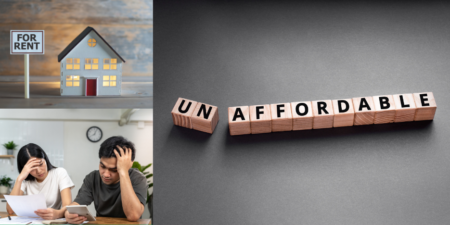For a single person on the Age Pension, there are just 89 affordable rental properties across the country, making rental affordability a pipe dream.
Each year, Anglicare Australia looks at all of the rental properties listed on realestate.com.au on a weekend in March or April. Using this data, they produce an annual ‘Rental Affordability Snapshot’ showing how many rentals are affordable for different groups of people on low incomes.
How bad is it?
The latest snapshot shows that on the weekend that the survey was conducted, of the 45,115 properties listed for rent across Australia, just 89 properties, or 0.2%, were affordable for a single Age Pensioner. For a single person receiving the JobSeeker Payment, there were 3 affordable properties, while for a single person receiving a Youth Allowance payment, there were none.
For a person on the minimum wage the story was also dire with only 289 affordable properties, or 0.6% of the total across the entire country.
Couples fared slightly better (though not much). For a couple both receiving the Age Pension, 1% of listings were considered affordable, while for a family of four with both parents earning the minimum wage, the percentage rose to only 13.4%.
How is rental affordability measured?
The Rental Affordability Snapshot considers rents to be affordable if they are no more than 30% of a household budget. This is an internationally accepted standard which is also used by the Australian Bureau of Statistics. Of course, many households are forced to pay a much higher percentage of their budget on rent, but doing so often demands that they delay or forego other expenses including bills, groceries, heating or cooling, medical appointments and medication. Importantly, paying more than 30% of their budget in rent also prevents households from being able to build savings or set money aside for emergencies and unforeseen costs. This makes them particularly vulnerable to cost-of-living pressures and rent increases.
Part of a broader problem
The lack of rental affordability is a symptom of a bigger issue in Australia. For decades, Government policies have treated housing like a financial asset rather than a place to live. Policies like negative gearing have made the housing market more like the stock market. People are encouraged to invest their money, build wealth and gain so-called ‘passive income’ from these investments.
There are three major problems with this approach though.
First, much of that passive income comes from the 30% of Australians who are renters. And as the rental affordability snapshot shows, many renters are experiencing financial stress because of the cost of renting. In New South Wales, tenancy laws also favour landlords, so renters can face sudden and severe rent increases and ‘no cause’ evictions without any legal protections.
Second, it makes it easier for people who already own homes to buy a second, third or fourth property, while locking others out of the market altogether. In New South Wales, investors now make up 40% of all mortgage applicants, while first home buyers are just 16%. Once you include investors who buy a house outright, this divide gets even bigger.
Third, as research has shown, treating housing like a financial asset encourages investors to buy houses when prices go up because they see it as a lucrative investment. This creates more demand in the market, which drives prices up even further and makes it even harder for people to afford their first home.
What can be done
Australia’s housing crisis is not new, but we’ve only recently seen politicians offer some tangible strategies to improve the situation.
The Australian Government has focused on getting more homes built to try and alleviate the problem, but as Anglicare’s Rental Affordability Snapshot notes, the rate of new homes being built already outstrips population growth. The problem is, these new homes are still largely being bought by investors rather than first home buyers, so increasing the supply of homes won’t solve the crisis on its own.
Senate crossbenchers Jacqui Lambie and David Pocock have modelled some potential changes to negative gearing that they say would take away the unfair advantages given to investors, and would give renters and first home buyers a better shot at affording a home.
Renters rights organisations have long since pushed for protections from unfair evictions and exorbitant rental increases to make rental affordability a real possibility, and some politicians have started taking notice. While the NSW Government has said they support fixing eviction laws, they’ve ruled out doing anything about rents.
Housing experts have also called for the Government to build more public and community housing so that more people can access the sort of stable and affordable rental housing that simply doesn’t exist in the private rental market.
Finally, the Greens have proposed the creation of a publicly-owned property developer that would compete with private developers to build more houses and bring down building costs, while prioritising selling to first home buyers.
It’s clear that no single solution will fix the rental affordability crisis, but the Government must do more to support and protect renters. Until something changes, renters will continue to suffer while investors make big profits.
